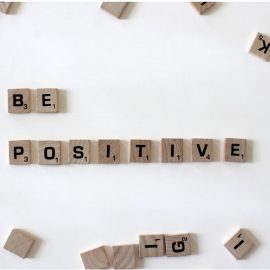

This article is an excerpt from the Shortform book guide to "Daring Greatly" by Brené Brown. Shortform has the world's best summaries and analyses of books you should be reading.
Like this article? Sign up for a free trial here .
Do you struggle with feelings of shame? How can you build shame resilience?
Shame resilience is the ability to recognize when you’re experiencing shame and move away from it towards empathy. It helps you thrive in a culture where shame is rampant.
Read about the problems with internalizing shame and how to move beyond it by developing shame resilience.
What Is Shame Resilience?
Shame wants you to stay silent and feel alone. The very experience of shame causes you to question your worthiness for being seen. In order to move beyond shame, you need to be willing to embrace vulnerability and develop shame resilience. This allows you to show up authentically and facilitates meaningful connection, self-worth, and belonging.
What’s the Problem With Internalizing Shame?
You are unable to connect to your wholeheartedness. The effect of this is threefold:
- Dependency: Your self-worth becomes dependent on what others think of you, and because your worth is dependent on something external, you are not able to step into your most wholehearted self, and you are always at the mercy of external forces.
- Risk aversion: In order to avoid pain, you take fewer risks. Eventually, you may even decide taking risks isn’t worth it and stop trying entirely. Your life feels precarious, like a house of cards, at risk of crumbling if you stop people-pleasing the way shame requires.
- Blocked Creativity & Innovation: In a broader context, the internalization of shame kills both creativity and innovation. How so? Shame exacerbates fear. As mentioned above, when you’re afraid, you avoid taking risks. Risks are a necessity for creativity and innovation.
Antidotes to Shame
There are three main antidotes to shame.
Antidote #1: Worthiness
- From a place of worthiness, you can take risks, because your sense of self is not dependent on external approval.
What is possible when your self-worth isn’t constantly at risk?
- You can access courage more readily
- You are willing to show people who you truly are
Antidote #2: Separating Yourself From Your Failure
It’s crucially important that you learn to separate failure from your self-worth if you want to live a wholehearted life. Failure is unavoidable, and if you allow every mistake you make to diminish you, you’ll never lead a life that feels fully expressed.
Guilt, you might be surprised to find, is a healthier way to process your behavior, because it distinguishes your behavior as separate from who you are, allowing you the space to grow. It’s also actionable, because the discomfort of your actions not matching your values motivates conscious change. This discomfort ultimately supports wholeheartedness.
Antidote #3: Shame Resilience
How do you allow yourself to share shame with others when you’re afraid of their judgment or rejection? Shame resilience. Shame resilience is the ability to recognize when you’re experiencing shame, to move away from that lens, and to consciously engage with empathy. Shame resilience is the key to embracing your vulnerability.
The 4 Steps of Shame Resilience
There are four steps to practicing shame resilience.
Step #1. Recognize Shame and Understand Its Triggers
Given that shame has biological roots, this first step is about noticing your experience of it. It’s often helpful to try being present with the physical experience first. For example, how does your body feel when you’re feeling shame? Is there a tightness in your chest? A sensation of hot or cold? Are these physical responses a reaction to a specific thought or external message?
You can also use context clues to determine when you’re in a state of shame. Are you behaving differently around different people? If so, notice how you feel in each environment. Do you feel present? Disconnected?
The benefit of becoming aware within your experience of shame is that you’ll begin to notice repeating patterns, familiarize yourself with the associated sensations, and identify their triggers. This allows you to demystify the origin of your shame, and empowers you to move to the next step of developing resilience.
Step #2: Practice Critical Awareness
This step is about taking a closer look at the thoughts, beliefs, or expectations that trigger your shame, and shining a critical light upon them.
Are the messages based in reality, or are they unreasonable? Would conceding to them align with who you are, or would you be living up to someone else’s expectations?
Practicing critical awareness allows you to differentiate between what is attainable and unattainable, or authentic and inauthentic. Once you do this within yourself, you’re ready to check in with others that you trust (detailed in the next step).
Step #3: Reach Out
When you’re in shame, empathy is an important part of the antidote, and you need to connect with others in order to facilitate that. Once you have developed critical awareness around an experience, you can reach out to a trusted friend or family member and share how you’re feeling. This is critical because it supports you to know that you are worthy of being heard, and that you are not alone.
Step #4: Speaking Shame
The final step is to become comfortable with speaking about shame, not just for the purpose of receiving empathy, but to advocate for your needs. This allows you to practice worthiness, which is a cornerstone of Wholeheartedness.
Why Is It so Helpful to Talk About Shame?
When you speak about shame, you are communicating to yourself and others: “I am worthy of love, connection, and belonging.”
How does practicing shame resilience positively impact your relationships? As discussed earlier, there seems to be a lack of understanding between men and women in regards to shame. That misunderstanding hinders intimacy. Being able to engage in shame resilience alone, as well as together, allows men and women to build a bridge to one another (instead of remaining polarized in a gendered cycle of fear or false assumptions).
Shaming a loved one is one of the most serious trust violations you can engage in. Each time you misuse the trust and vulnerability you’ve cultivated by engaging in shaming behavior, you have done something that will be difficult to repair. When you practice shame resilience, you begin to reach towards others instead of moving against or away from others.
Shame resilience allows you to cultivate real, loving connections, where you engage in open, honest communication, and allow yourself to be truly seen and known. Love, like shame resilience, is a practice, and when you develop resilience, you have the ingredients to feel deep connection and belonging in your relationships. Along those lines, the most valuable result of developing shame resilience is your ability to become “real”. To be “real” is to reveal yourself to others in all your power and vulnerability, and feel that you are known, that you are loved, and that you belong.

———End of Preview———
Like what you just read? Read the rest of the world's best book summary and analysis of Brené Brown's "Daring Greatly" at Shortform .
Here's what you'll find in our full Daring Greatly summary :
- What it means to live Wholeheartedly
- The 3 things you need to feel happy and healthy
- How scarcity and shame prevent you from achieving a Wholehearted life






